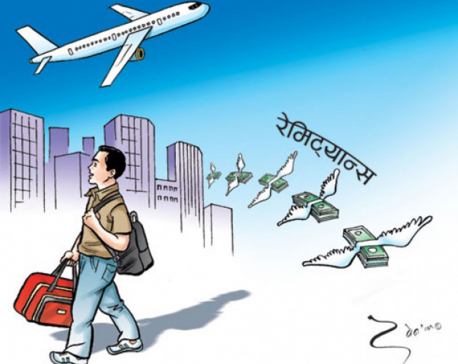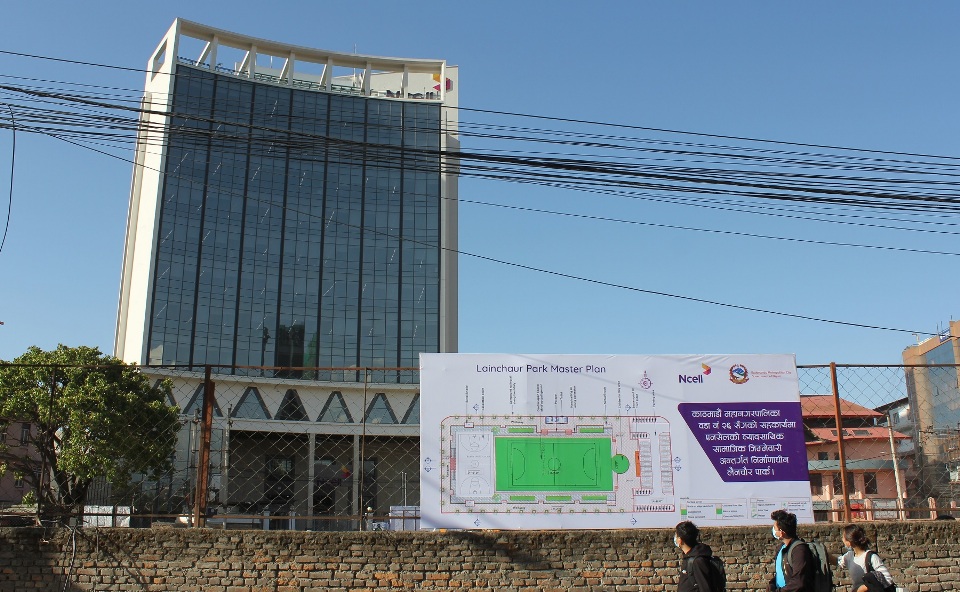
OR
#OPINION
Remittance inflows pose Dutch Disease risk in Nepalese economy
Published On: August 16, 2023 08:37 AM NPT By: Suraj Ghimire


Suraj Ghimire
The author is a lecturer of Economics at Rupandehi Campus, Bhairahawa.ecosuraj@gmail.com
Poverty, income inequality, and low domestic production capacity are significant issues in the country. Import rates are rising rapidly, while export growth remains sluggish. Both the agricultural and industrial sectors face inadequate investment. Additionally, the economy is hampered by insufficient physical infrastructure, energy crises, and political instability. The reliance on imported goods leads to a prominent trend of marginal consumption. Furthermore, the weak investment multiplier and low capital formation contribute to the challenges faced by the economy.
The absence of an investment-friendly environment has increased the risk of capital flight, whereas the inability to generate sufficient employment opportunities has contributed to growing economic, social, and political instability. While foreign employment has provided some relief, the influx of remittances has simultaneously increased imports and negatively impacted domestic production. This raises concerns about the nation falling into a 'remittance trap'. In the event of a decrease or cessation of remittance income in the future, Nepal, as a developing country, would face a severe economic crisis that would be difficult to prevent or manage. Coping with the consequences of such a scenario would pose significant challenges for the country.
What is "Dutch Disease"?
In the 19th century, the Netherlands relied heavily on exporting natural gas, which was crucial for its economy. This means that the country's economy depended on the foreign currency earned from natural gas exports. Consequently, investment in the industrial sector decreased as the primary focus was on natural gas. However, as the natural gas stock declined, the Dutch economy encountered numerous challenges. The production sector, heavily reliant on natural gas, reached a critical state, posing a problem for an economy highly dependent on foreign income. Economists coined this economic issue as the "Dutch Disease."
Symptoms of "Dutch Disease"
The "Dutch Disease" refers to the situation where an excessive influx of foreign currency has adverse effects on the productive sector. When a country receives substantial foreign inflows, it becomes dependent on imports, resulting in reduced investments in its domestic productive sector. As a consequence, the country becomes highly reliant on imports. The symptoms of the Dutch Disease include a complete reliance on foreign currency, a growing trade deficit, increased spending on imported goods, rising inflation, decreased investments in the productive sector, weakened investment multiplier, and foreign currency serving as the primary source of employment.
Remittance, foreign exchange reserves and foreign employment in Nepal
According to government data, remittance income in the fiscal year 2021/22 amounted to Rs 1007 billion, accounting to approximately 21 percent of the total gross domestic product. Rising unemployment has led to a significant rise in Nepali youth seeking opportunities abroad. During the review period, the number of Nepalis obtaining labour approval for foreign employment increased by 51.4 percent to 4,21,279, while the number of those renewing labour permits rose by 3.7 percent to 2,38,976. This trend highlights a growing demand for foreign employment while skilled worker shortages persist in the agricultural and industrial sectors.
Likewise, Nepal's total foreign exchange reserves, which stood at Rs 1215.8 billion in mid-July 2022, experienced a 20.9 percent increase, reaching Rs 1470.33 billion by mid-May 2023. In terms of US dollars, the reserves amounted to 9.54 billion at the end of mid-July 2022, reflecting a 17.6 percent increase to 11.21 billion by mid-May, 2023. Given that remittance income remains the primary and dependable source of foreign exchange in Nepal, there exists a direct correlation between remittances and foreign exchange reserves.
How remittance creates risk of ‘Dutch Disease’ in Nepal?
Nepal is currently facing challenges of low economic growth and a high trade deficit. Moreover, the revenue generated in the country only covers regular expenses. However, the insufficient capital expenditure hampers significant contributions to economic growth and development, resulting in low employment, production, and income levels. Similarly, the agricultural sector, responsible for producing essential goods for consumption, has been unable to achieve expected growth as many young individuals involved in agriculture have migrated abroad. Developed nations are purchasing goods manufactured using cheap labor from impoverished countries like ours. Consequently, the income received from remittances ends up being sent abroad again, while we rely solely on remittance inflows.
The country heavily relies on remittance income to sustain itself. However, when remittances arrive, they are typically deposited in banks. Unfortunately, these banks often invest the funds in non-productive sectors that yield high profits. Most investments are directed towards businesses that generate profit through margins rather than creating substantial wealth. Nepal's trade is predominantly reliant on imports, where traders get profit from import. Due to the benefits experienced by businessmen, banks, and the government from this trade, there has been a lack of focus on investing in the industrial sector.
Moreover, the industrial sector in Nepal is facing multiple challenges. Issues like energy crises, donation terrorism, strikes, absence of a convenient credit system, reliance on foreign raw materials, lack of technology, and shortage of skilled manpower have significantly impacted industrial operations. Inflation has further escalated costs, resulting in weakened competitiveness of Nepali industries. Consequently, many industrialists, perceiving a bleak future, have ceased production and shifted their focus towards importing goods instead, such as salmon.This shift has further worsened the state of the industry.
The agriculture and industry sectors in Nepal are currently facing challenges and are in a weakened state. Concurrently, the Nepalese market has become inundated with foreign goods, leading to a significant surge in imports. Despite the increase in remittance income, our ability to address the import situation has been limited. However, if issues arise in foreign employment, there will be a decline in remittance inflows, resulting in a shortage of funds in banks. This, in turn, hampers industrialists' access to loans. Moreover, decreased imports would lead to a decline in tax collection for the government, ultimately exerting a negative impact on the overall economy. Consequently, the risk of the Dutch Disease appears to be escalating within the country.
Conclusion
Around 56 percent of households in the country depend on remittance income, which plays a vital role in reducing poverty and income inequality. However, its long-term sustainability is uncertain due to various factors affecting foreign employment. Therefore, Nepal's primary focus should be on utilizing remittances in the productive sector. This requires implementing policy measures like 'Remittance Bonds' to direct funds into productive areas and introducing mandatory financial education. Increasing investment in agriculture and industry is essential to create more job opportunities. Encouraging returnees from foreign employment to start businesses that generate employment domestically is crucial. A combined approach of import substitution and export promotion is necessary, along with strengthening the country's production capacity. Creating an investment-friendly environment is a shared responsibility of the government, central bank, policymakers, political parties, and all stakeholders to leverage remittances for the productive sector and job creation.
You May Like This

Tinau, Boom Remittance in remittance pact
KATHMANDU, July 24: Boom Remittance Pvt Ltd has appointed Tinau Development Bank Limited as its agent to receive money sent... Read More...

Nepal received 6.3 percent less remittance during mid-July and mid-September of current FY
KATHMANDU, Oct 25: Nepal’s earnings from remittance declined by 6.3 percent to Rs 155.37 billion during the first two months... Read More...

SWBBL, Boom sign MoU to provide remittance services
KATHMANDU, May 23: Swabalamban Laghubitta Bikas Bank Ltd (SWBBL) and Boom Remittance have signed a memorandum of understanding (MoU) to... Read More...



Just In
- 3rd Investment Summit: Govt seeking letters of intent for 20 projects
- Gold price increases by Rs 400 per tola
- ‘We have established a long-term vision and policy stability in key investment sectors’
- FNCCI President Dhakal invites investors to explore Nepal's promising sectors
- The South Korean Development Formula
- T-20 series: Nepal playing second match against West Indies ‘A’ today
- Investing in Nepal: Challenges and Opportunities
- ‘Nepal should focus on ease and speed of doing business’







-1200x560-wm_20240427144118.jpg)








Leave A Comment